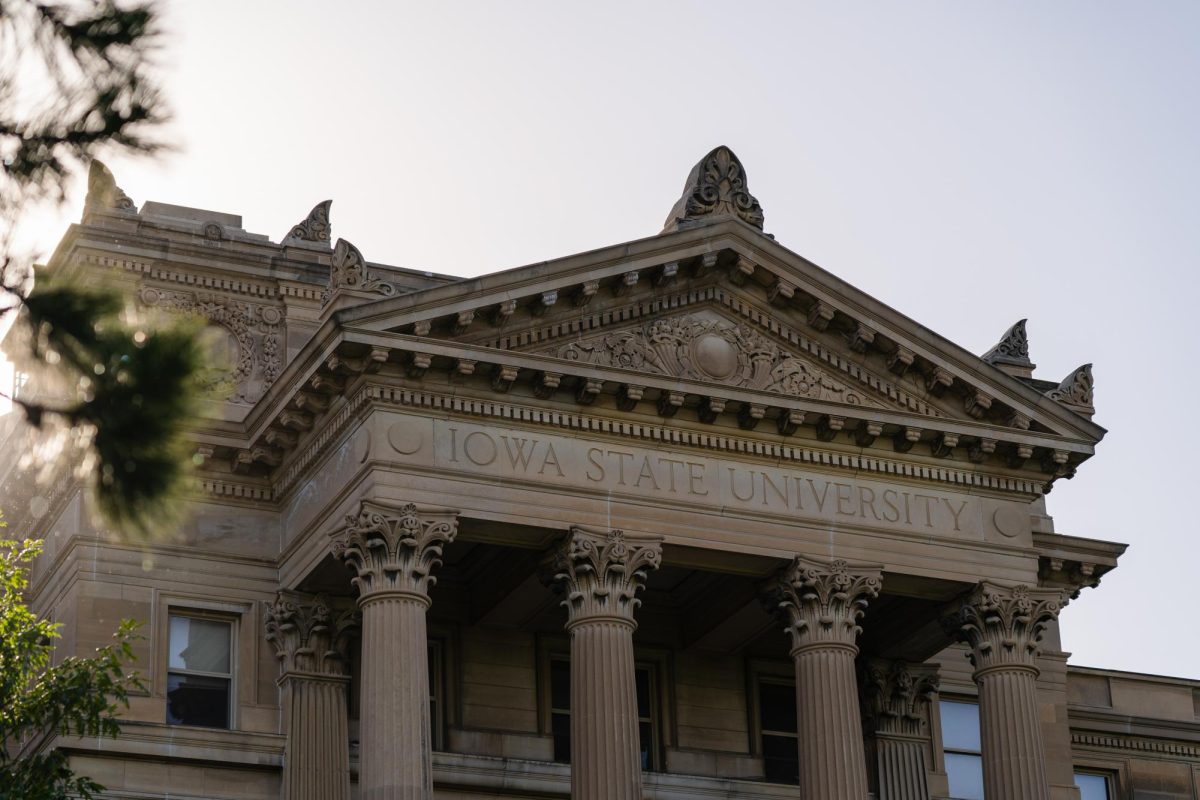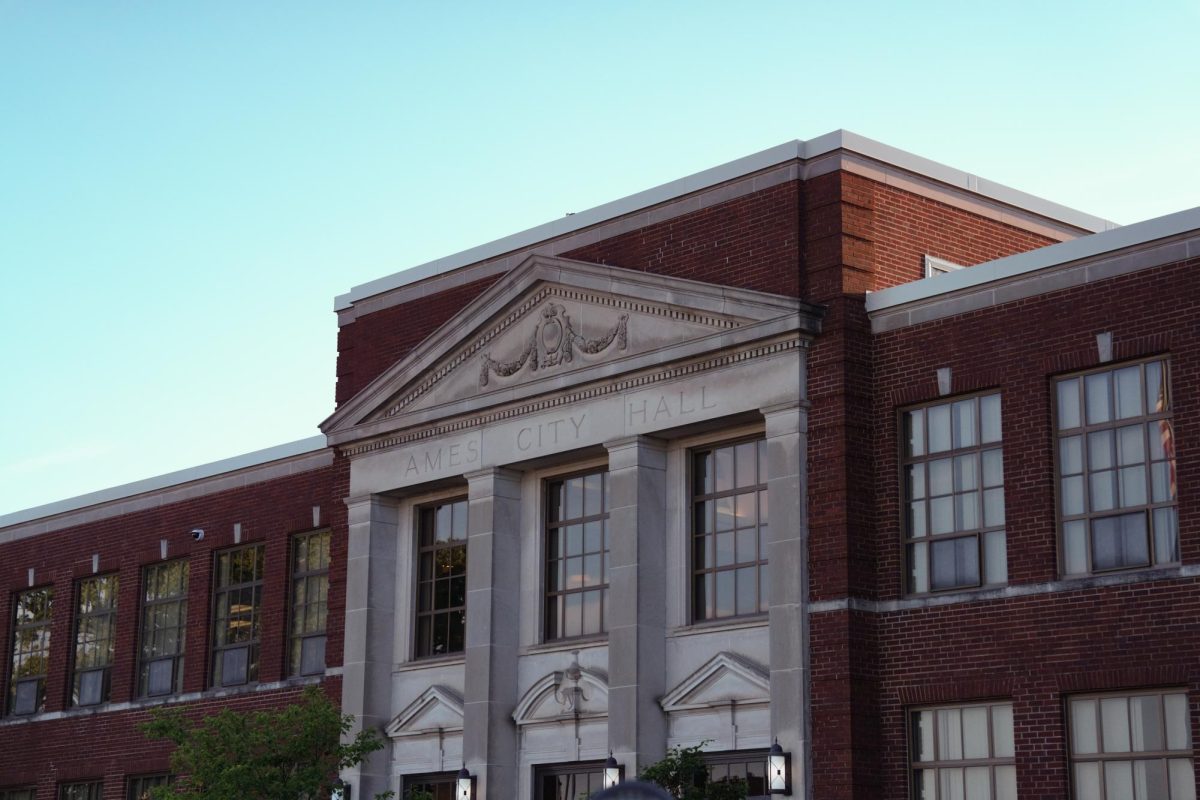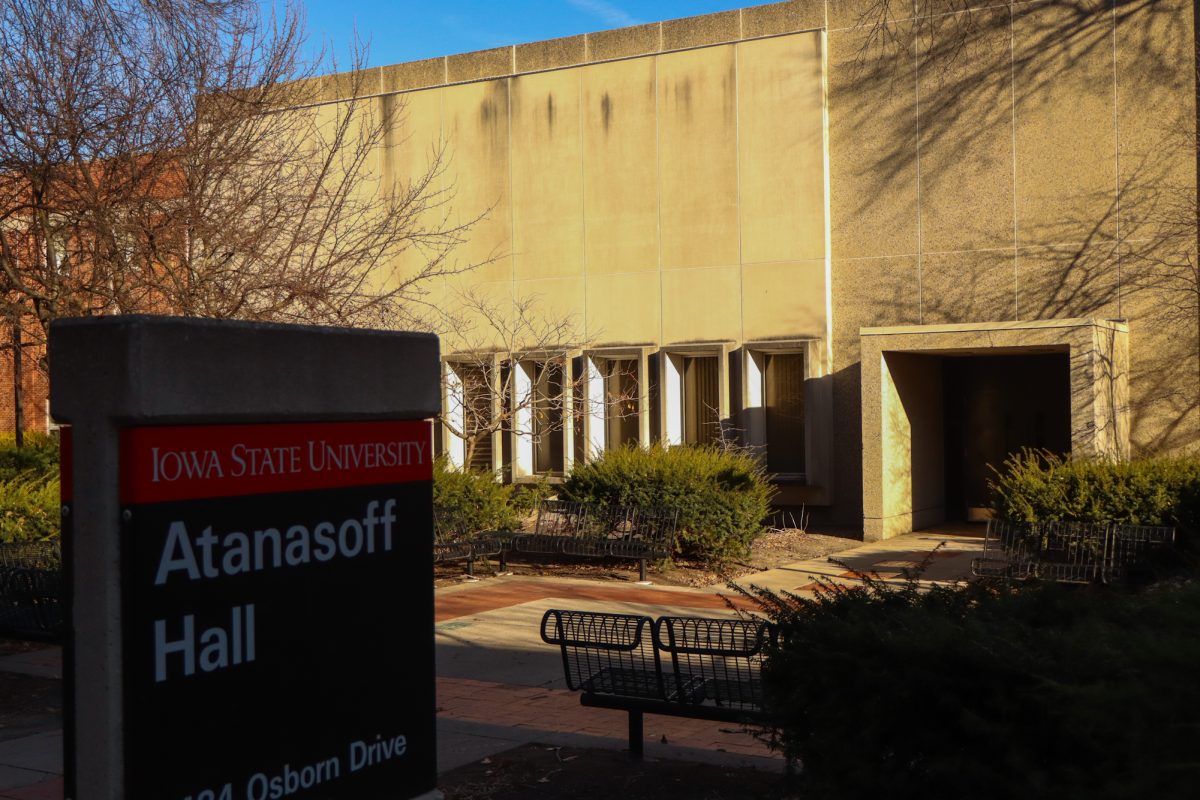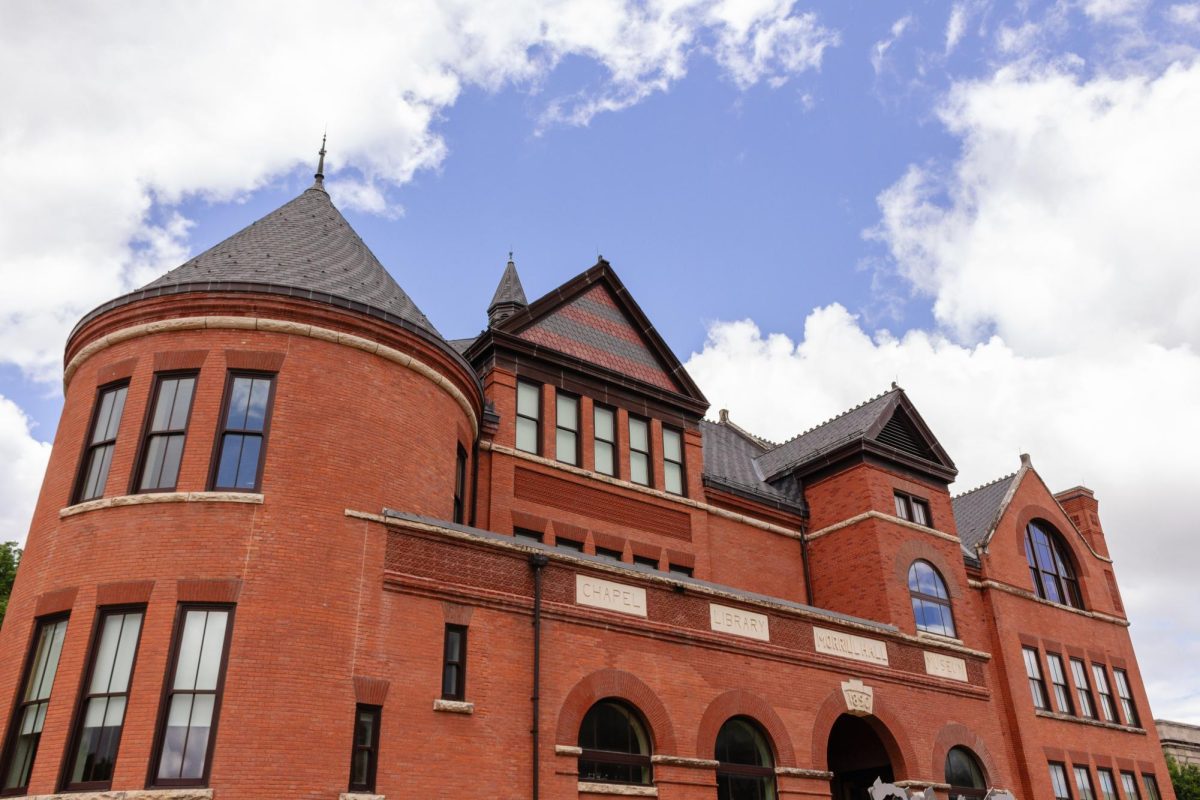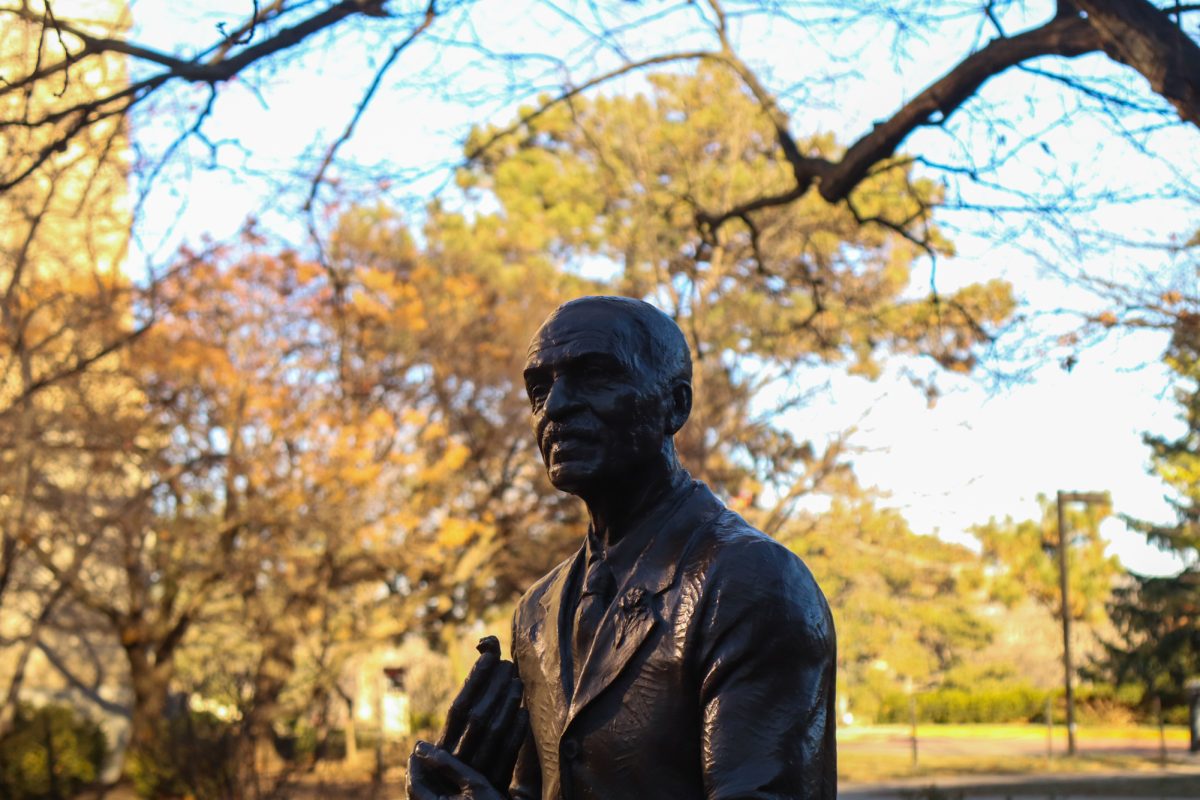The Gold Star Hall Ceremony, held in Memorial Union on Wednesday, honored past Iowa State students who sacrificed their lives while serving in the military.
1st Lt. Sidney Wilson Peterson, 2nd Lt. Max Harvey Collins and Capt. James Wayne Herrick Jr. were honored at the event, all former students at Iowa State.
The Gold Star Hall, located in the Memorial Union, stands as a living memorial to nearly 600 Iowa Staters who died serving in WWI, WWII, Korea, Vietnam, Somalia and the global war on terrorism.
A tradition within the military that built a sense of belonging is to present a coin, signifying a person’s connection to an organization. Iowa State has designed a coin to honor this transition and to help foster new connections. The families of the honorees received the coin.
Iowa State President Wendy Wintersteen welcomed the families and guests of the room.
“The event is an annual opportunity for reflection and reverence for the service and sacrifices made by our fellow Iowa Staters and is a time to share our deep gratitude to our current members of the armed forces,” Wintersteen said. “And to recognize the family and friends who provide love and support.”
Lt. Col. Jeremey Paul of the U.S. Army read an Honoree Remembrance for Honoree Sidney Wilson Peterson.
On Nov. 30, 1919, in Ringsted, Iowa, Peterson was born to Joseph and Maritita Peterson. Peterson was an Iowa State student from 1937 to 1938, majoring in forestry.
Peterson decided to leave school and join the Navy Coast Guard. He started his service Feb. 3, 1942.
During his tenure with the U.S. Coast Guard, Peterson undertook a total of 60 distinct missions.
“On May 28, 1944, the flight took off from the US Army Air Corps Base in England,” Paul said. “The target bombing target was a railroad bridge in Saint Germain, part of the Allied push to disrupt German supplies. Sidney was aboard a B26 bravo marauder. During the flight, the crew drew German anti-aircraft fire, drawn by flack just before bombs away, the B26 went into a dive with one engine on fire.”
Despite their efforts to escape, three crew members, including Peterson, perished and two survived. Peterson was declared missing after this encounter and was declared dead six months later.
After Peterson’s passing, he was honored with numerous medals of awards, including the previous Distinguished Flying Cross, the 10 Oak Leaf Clusters Award and a Purple Heart.
“In Sidney’s hometown, his legacy lives on every Memorial Day,” Paul said. “The town commissions a pilot to fly about the caskets and a stirring airborne tribute effect.”
Sgt. Jeremy A. Jacobsen, a USMC Veteran, then honored Max Harvey Collins.
Collins was born Jan. 26, 1929, in Nevada, Iowa, to parents Harvey and Leoda Collins.
Collins was an Iowa State student from 1947 to 1950. During his time at Iowa State, he studied aeronautical engineering.
After two years at Iowa State, Collins decided to enlist in the U.S. Air Force. Collins was called into cadet officer training in Sept. 1951. During this time, he learned to fly the T6 trainer and the T28 trainer.
“On May 4, 1953, Collins was attempting his fourth combat mission,” Jacobsen said. “When his plane crashed during takeoff, he was killed. His death came less than three months before his armistice ended the conflict.”
After Collin’s passing, he was awarded the Korean Service Medal of two brown stars, the United Nations and National Defense Service Medals, the Korean presidential unit citation and the Republic of Korea War Service Medal.
Lt. Col. Daniel P. Divine, USMC, honored James Wayne Herrick Jr.
Herrick was born Oct. 28, 1994, to parents James and Isla Herrick in the town of Panora, Iowa.
Herrick was diagnosed with polio in 1952. However, with this diagnosis, he was able to fully recover one year later.
Herrick was an Iowa State student from 1963 to 1967 and completed his bachelor’s degree in animal husbandry. In 1967, Herrick was also anointed to the commissioning of the second lieutenant of the Air Force.
On Oct. 27, 1969, Herrick was the pilot of a Douglas Skywriter on a secret reconnaissance mission near the Vietnam border.
The flight plan on this mission was to survey a region that allows what is called the “bird’s nest.” This region was difficult to navigate as it was in a canyon. The only way pilots were successfully able to get down into the canyon was to circle like a bird.
“The lead pilot performed a declining circle into the area, followed by Herrick as the two conducted the reconnaissance of the area, the weather turned worse,” Divine said. “The late pilot made the circling maneuver to safely ascend out of the area as well. Herrick was instructed to do so as well. But shortly afterward, the flight leader lost radio contact with him. Once above the clouds, the pilot could not place his eyes on Herrick’s plane.”
Herrick was never seen again and it was never confirmed whether the plane was shot down or had experienced mechanical difficulties.
On Nov. 21, 1977, over eight years later, Herrick was declared killed in action.
After Herrick’s passing, he was awarded the Purple Heart, Distinguished Flying Cross and the air number for his bravery and devotion to our country.
Herrick’s name is inscribed on the Vietnam Veterans Memorial in Washington.
“The role of the Memorial Union and partnership with the military-affiliated students center has been to ensure the legacy of the Memorial Union’s purpose and to ensure veterans and their families know that we will always remember them for their service and sacrifice,” Chad Garland, the Memorial Union director, said.
The lecture recording will be uploaded in the next 36 hours and available for those with an Iowa State NetID for two weeks on the available recording page.






